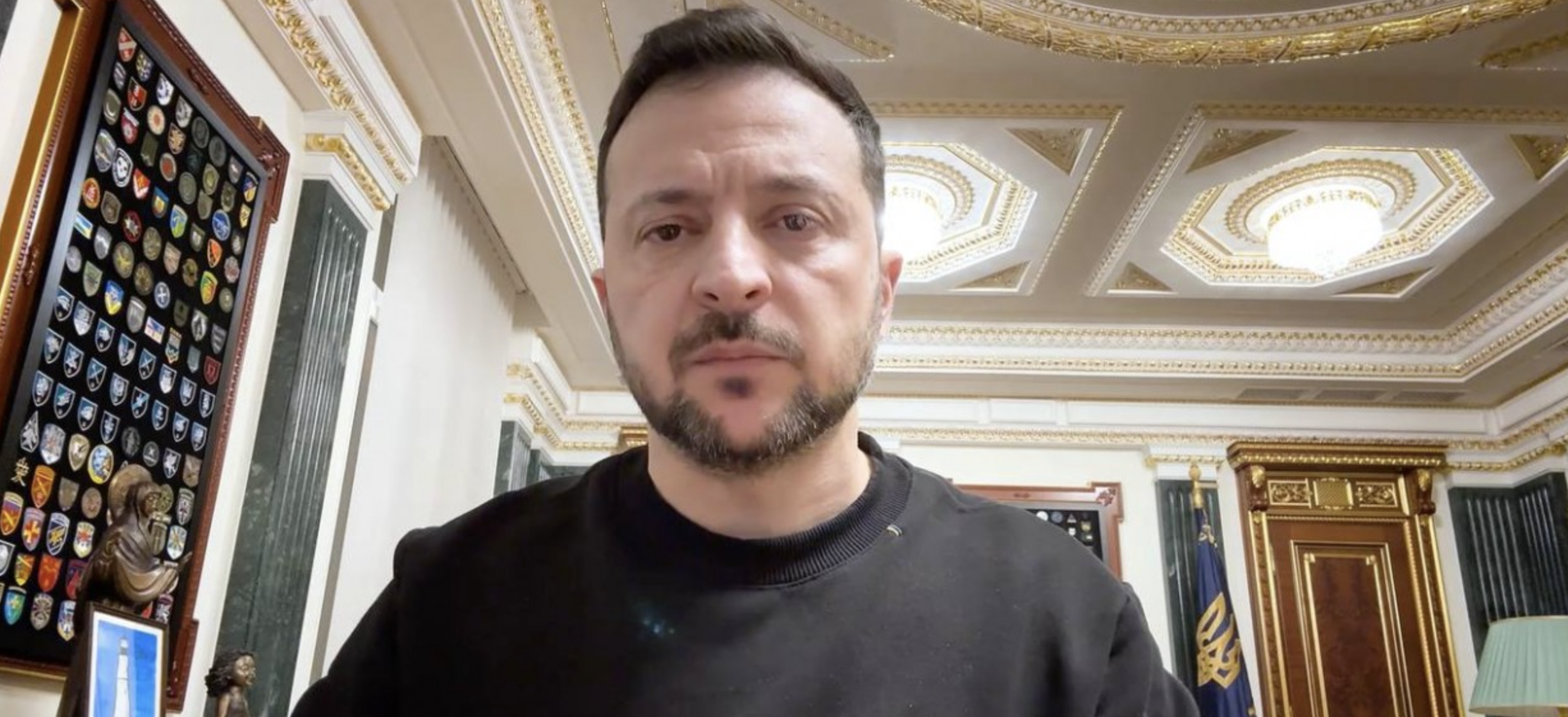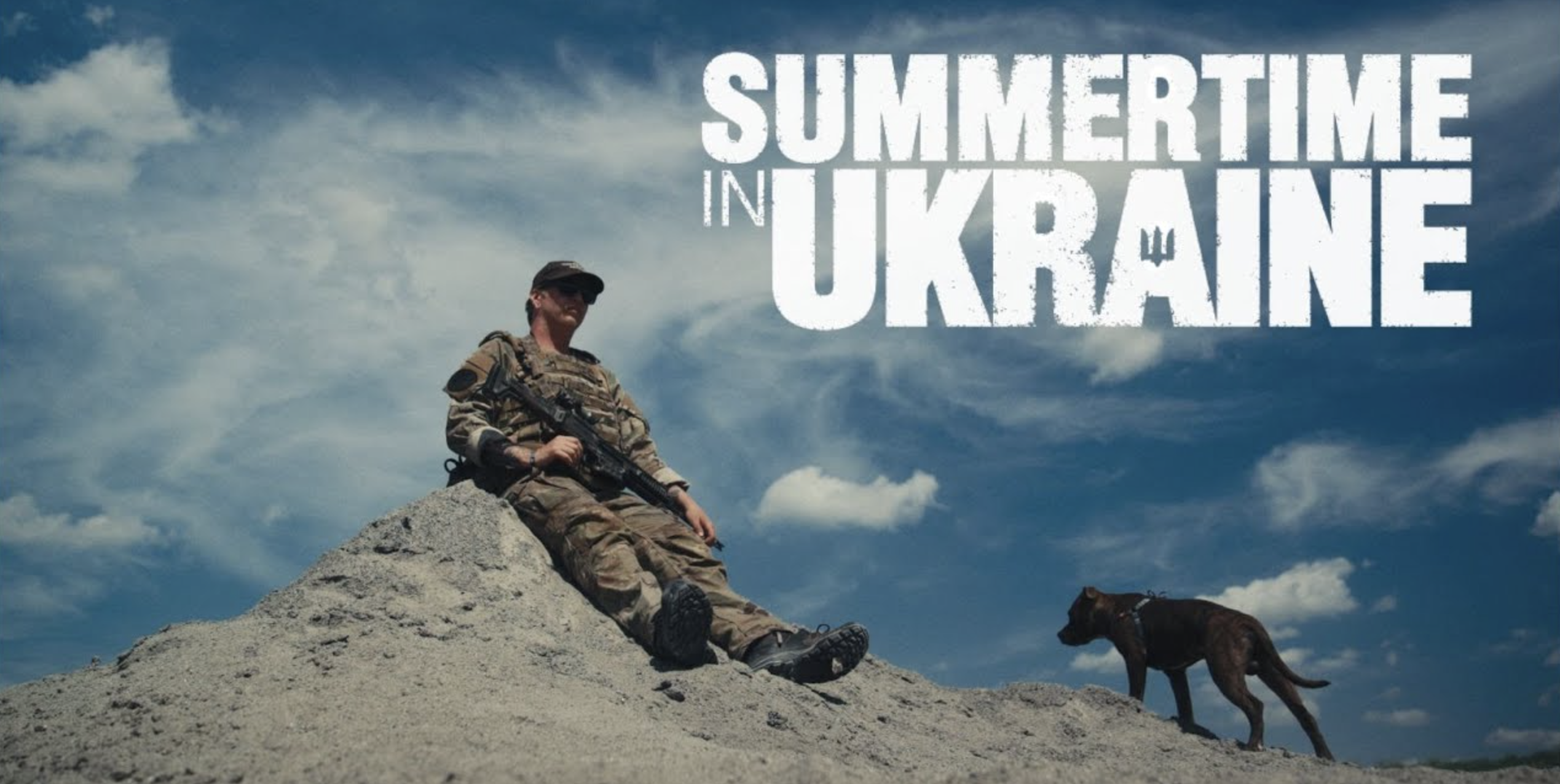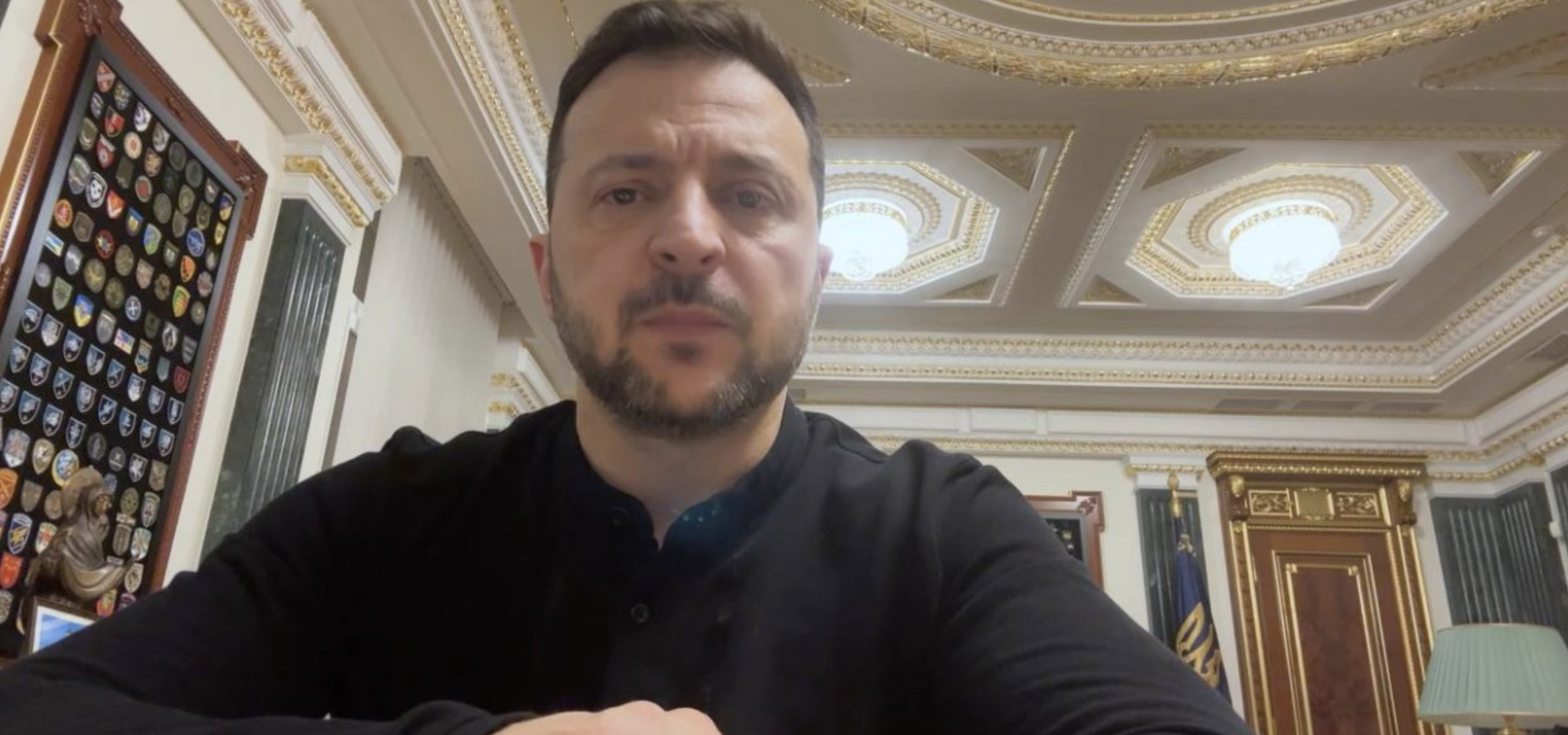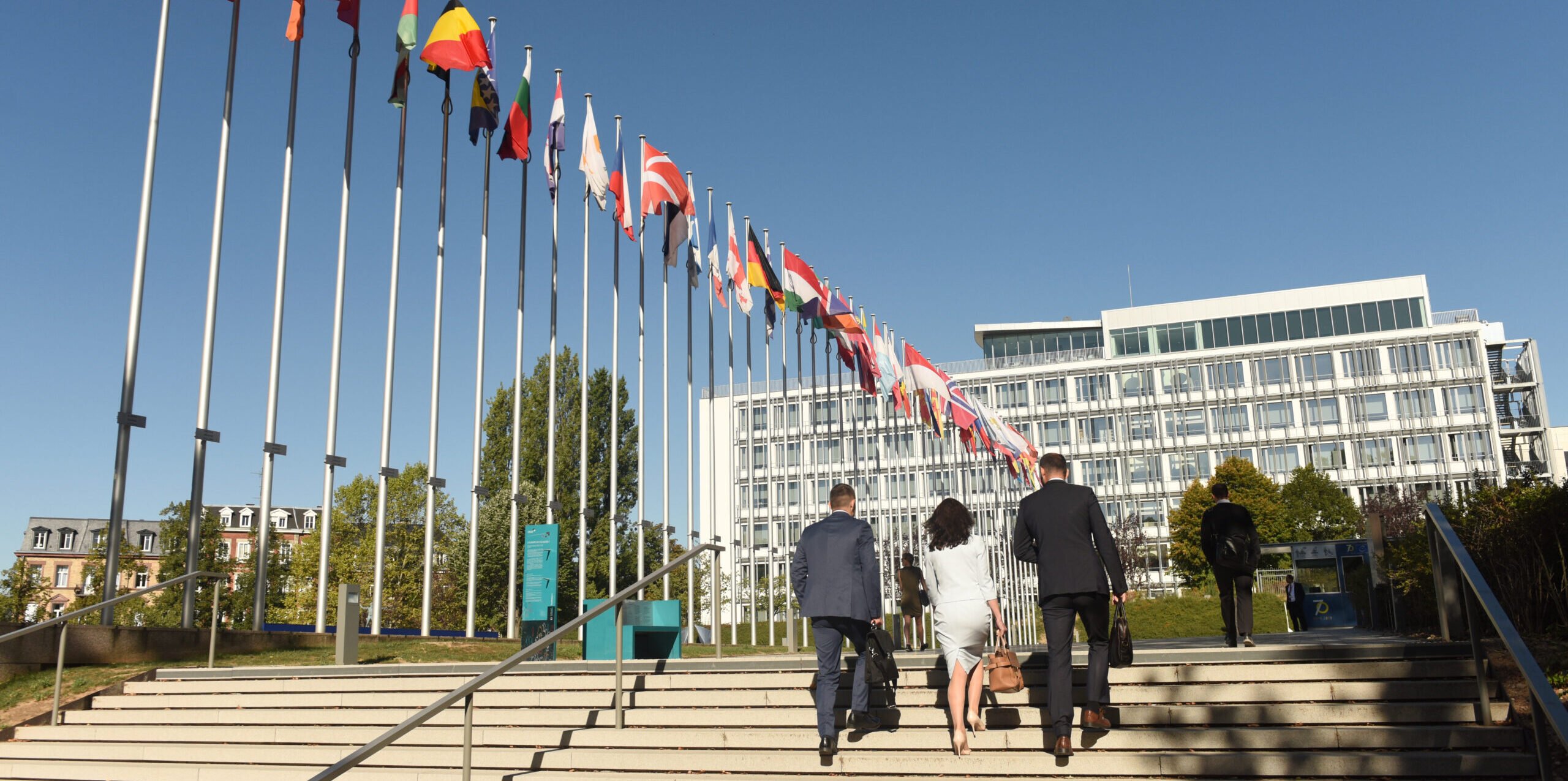– How do regular people become volunteers?
– I have been doing this since 2014, although not on such a scale. I have been supporting my friends who went to fight. Two or three weeks before the full-scale attack, a lot of requests started coming in, and I started that kind of work [collecting aid] again – without a connection to any organization, just to support my friends. And when the full-blown war started, then there were a lot of requests: to pick up children from Kyiv, to find a driver for a the car – we needed everything at once – there were no supplies available. Volunteers collected what they could. Then Paul Grod, the President of the Ukrainian World Congress, came to me and asked if I would like to take on a project in Ukraine – the supply of non-lethal aid for the Armed Forces and TRO. At that time, I was living in Canada and had just started my Masters in January. All my life I dreamed of finally helping out like this. And when Paul asked, “Will you go to Poland and Ukraine and work on this project,” I thought to myself that this was a good opportunity to do something useful for Ukraine and direct the funds to where they needed to be directed. There was a good budget, and I knew how to do it, but I had to study at the same time. For about two weeks, I tried to combine this volunteer work with my studies, but I realized that it had to be either one or the other, so I took a break from my Master’s degree and switched completely to this work. I have been here since March 5.

– What is this project, how does it work and who finances it?
– The “Unite with Ukraine” project is financed by the UWC – it has certain donors, and it collects funds from communities around the world. For example, the Ukrainian community in Australia recently raised $200,000, the Saint Javelin project, led by former journalist Christian Borys, donated more than $1 million to the “Unite with Ukraine” fund. With these funds, we were able to cover a part of the needs of the Armed Forces in more than 15 different categories. One of the partners of UWC is Territorial Defense. Supporting them was very important for the President of the UWC, the Board of Directors, and donors. It was clear to everyone that these were ordinary people who went to defend Ukraine, the same as our sons and daughters. They did not have the proper gear. This was the real picture. But we also work with the Ministry of Defense, the Ministry of Internal Affairs, and individual units of the Armed Forces. They provided assistance in tactical medicine and for Special Operations Forces.
At first, there were impressive lists of things needed – five thousand for each position, for example. Now the requests are quite specific. For example, for winter needs, there are no more generators in Europe; winter tents are very much sought after, and there will always be a need for tactical medicine supplies.
– Is it possible to control that all this goes where it should?
– Maybe, but you have to live in trains, go everywhere, where the help goes. And this is not a matter of mistrust of particular persons or specific structures. It is different. Therefore, we transport through our contacts in logistics. And, mostly, I go with that product to where it ends up. I have heard many stories that somewhere something was sent, somewhere it was intercepted, but we did not have such a thing. We won’t allow it.

– Are there problems with the Ukrainian bureaucracy? That bureaucratic structures won’t let you in, that they want additional papers, a reward?
– I would not say that there is a problem with the bureaucracy. But this is a strange stage in the history of Ukraine. On the one hand, you have the “Diiya” application, it is very modern, there is no such other thing in the world. On the other hand, in military matters, four documents must be drawn up in order to import something from a technical spectrum. I understand that the situation was unclear from the beginning, a procedure was drawn up on how it should all be transported, and with what documents. But it’s four seals, four signatures, and running after the Commanders, who are usually very busy. They try to do it quickly, but sometimes it takes a week or two.
The biggest problem with the border is the volume of vans and cars. Previously, all imports and exports of Ukraine mostly went through seaports. Today, a lot of people travel by truck. In general, border guards work quite well. But it’s time to change the system with papers and stamps, it’s the remnants of Soviet life.
But as long as it exists, it must be reckoned with. Many people turn to us, saying, “They didn’t let us across the border.” What documents do you have? “No documents at all, what documents are there? It’s for the military.” This cannot be done in the seventh month of the war. I’m thinking of recording a lecture for the volunteers, so they understand what the process should look like.
– How much have the conditions for importing aid to Ukraine changed since the beginning of the war?
– It was easier to drive then because the process had not yet been defined. At the border, they opened a truck or bus, checked that it was not a product for sale, that it was something related to the military (not lethal), and the driver could make the corrections himself, and they would let them in. Now, if there is a mistake, you have to leave the car and redo the documents. We had one such case: in Canada, when, for example, one thousand five hundred is written, they write one, comma, five, zero, zero. And we entered some armor plates like this: 1,500. And the Polish customs officer says: “According to your documents, you have one and a half of something, but here is a whole truck, how can that be?” The driver was dumbfounded. And he did not let us fix it “on the knee”. All documents with seals had to be redone.

– Has the list of needs changed since 2014?
– The list of needs has not changed, but the amounts have changed. Then it was only about the East. In 2014-2015, winter things were also sought after, just like now. But now more than half a million people are serving on the front lines. And I don’t see where to get all these things. It is about the lack of fabric for clothing. It used to be brought in bulk from Turkey, but now there is also a shortage there. And this can seriously affect winter needs.
– In eight years, was it possible to establish at least some kind of production for the needs of the military in Ukraine?
– This process has started. Back in February-March, there were no professional Ukrainian manufacturers of armor plates at all, and now there are good examples of Ukrainian-certified manufacturers making very high-quality armor plates and plate carriers. Of the 16,000 plate carriers that we bought in Ukraine, the best were from the Ukrainian manufacturer. This is confirmed by the military. A good example of tactical medicine is the company “Sich”. They make very high-quality tourniquets. Backpacks and bags for first-aid kits also do not make sense to order out now, because they are made in Ukraine with high quality, refined in real time for the needs of the military. For example, a Chinese first-aid kit does not have a single fastener for an Israeli bandage. And the Ukrainians have already sewn it up. And when you open that Ukrainian first-aid kit, nothing will fall out of it.
– How deeply should one study the world ammunition market before ordering something?
– I work according to the principle of no compromises. I hate it when people say “this is better than nothing” and buy something of poor quality. There is a lot of that. They bring some terrible tourniquets from China, metal plates that do not hold a bullet, and that is death for the military personnel. These are not sneakers or a hat that will not hold heat. He or she will die from that tourniquet.

– Where and what products are made of the highest quality? Which countries specialize in what?
– The Americans make everything of high quality, but it is very difficult to transport anything from America. Due to their export declaration and permission, the timing is very long. If the scale of an order is large, it can be months. It is easier to find such items in Europe, and rather to transport them from Sweden to Ukraine than from the USA or from Canada. The Swedes are also good at producing bulletproof vests and helmets. But if I were to buy body armor now, I would buy a Ukrainian-made one.
– How much longer will you be able to work on such a scale? Are the donors not tired of giving money?
– I feel that the Western world has already moved away from the chaos that took place at the beginning. At that time, the funds simply flowed everywhere, to all charities, to all organizations. Any volunteer could write, “I am collecting for this and that”, and in half an hour the money would be raised. And now this war in the West is not covered in the news, it’s summer, vacations, and the Western world has calmed down a bit. I think they are now comfortable that the war is where it is. Yes, the line of the front is moving here and there, but Russian columns are no longer standing near Kyiv, and Belarusians are no longer preparing to go from the north to Lviv… However, it is still very dangerous. The enemy has many resources, and many people whom they throw away like meat. We lack such resources. We do not have two hundred million people who can last ten years. I have a friend, who has been fighting for nine years. I have no idea how he does it, how he survives it. And it is difficult for me to understand what the Western world is tired of. From the fact that they have given away 200 bucks somewhere a couple of times? There, in the East, in the South, people are really tired, but they continue to fight. However, the Ukrainian people have an insurmountable advantage. They know and understand what they are fighting for. This is undoubtedly the most difficult and at the same time the most inspiring period of my life. Interacting and working together with Ukrainians who show their love for their neighbors and their country every day is something that changed my life forever. I never doubted how strong, brave and amazing the Ukrainian people are, but now the whole world has become convinced of it. No one will ever give up here.
.jpg)
– How do non-Ukrainians perceive this war in Canada or the USA?
– At first, they were worried. I don’t have many friends of non-Ukrainian origin, but the ones I do have immediately wrote – what do you do, how can I help, where to put the money? They really wanted to help. And now nothing – they are silent as if the war is over. However, they do not live as we do now. When the mass media doesn’t show you something every day, you forget. Do we remember that there is also a very long war in Yemen? Few people follow that news. There are currently seven wars going on in the world, but the mass media hardly show them. Therefore, people of non-Ukrainian origin may not have forgotten about our war, but they do not think about it all the time, because they no longer feel threatened that they [Russians] will go to Poland or drop a nuclear bomb on London.
– I heard that you are planning to launch another project to help the Ukrainian Armed Forces. What is it about?
– The UWC currently has a partnership with the “Saint Javelin” brand. The brand sells T-shirts, and souvenirs, transfers funds to us, and we purchase aid for the Armed Forces. Together, we want to organize the sale of souvenirs from Russian trophy equipment, parts of tanks, helicopters, and airplanes. These will not be purely pieces of metal; artistic elements will be added to them, and they will kind of become works of art. The audience we want to sell it to is not American or Canadian Ukrainians. If the latter want to buy some – please, it’s very nice. But today we see requests from ordinary Americans and Canadians who are either collectors or very supportive of Ukraine. They do it because they value freedom very much. In America, freedom is very important. No one can tell anyone how to live. These people sympathize with Ukrainians because they see that Russia is committing aggression against free people who lived peacefully and did nothing to provoke war. Those people have been asking about trophy souvenirs for months.
This project will be called “Parts of War”. We believe that this can be a very large fundraiser. If we manage to do everything before the holidays, then by spring we will be able to cover the rather large needs of the Armed Forces. We are currently exploring all options on how to do this legally. It is very important to do this legally correctly, so as not to harm if these objects, for example, will have some value in the investigation of crimes against humanity.










